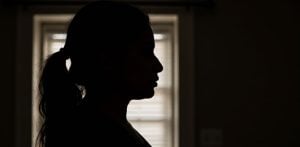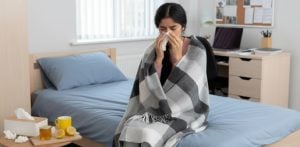"it doesn’t go any lower than one in 400 in any region."
An interim report from a large testing programme has presented signs that the rise in Covid-19 infections in England is now slowing.
The R-value, which is the average number of people an infected person infects, stands at around 1.1, indicating that the new government restrictions are beginning to have an effect.
The latest round of testing by the Imperial College React-1 study analysed swabs from more than 80,000 people out of a total of 150,000 taken between September 18-26, 2020.
It found that infections had risen substantially across all age groups and regions.
Based on the swabs, researchers estimated that more than one in 200 people now have Covid-19, up from 0.13% in the previous round of testing.
Steven Riley, the study’s author and a professor of infectious diseases at Imperial, said:
“It’s as high as approximately one in 100 in the north-west and then it doesn’t go any lower than one in 400 in any region.”
The proportion of infected people is the highest the study has recorded, with new cases in the over-65s rising sevenfold.
A similar increase was seen in the 55-64 age range. Young people continued to have the most infections, with almost 1% estimated to be infected.
Professor Paul Elliott, director of the React study, said:
“This reinforces the need for protective measures to limit the spread of the disease and the public’s adherence to these, which will be vital to minimise further significant illness and loss of life from Covid-19.
“It’s a really critical period, and we really need to get on top of this now.”
The R-value had fallen from 1.7 to 1.1, however, Professor Elliott stressed there was a large error margin around the figure.
It suggests the rate of new infections has decreased, but with it just above one, infections would continue to rise.
Professor Riley said: “It is not a flattening of the curve.
“To use one of the prime minister’s metaphors, if this epidemic is walking up and down a hill then what the study shows is that [from late August to the current period] it was a steep hill, and we have climbed quite a high way up.
“The preliminary evidence is that the gradient of the hill has definitely come down a bit, but we do not know that it’s flat and we do not know that we’ve reached the summit.”
However, it does indicate that some of the new measures are slowing down the transmission of the virus.
Professor Elliott said: “The combination of measures may well have slowed the rate of rise, and that’s the first step in getting the virus down, which is what we’ve got to do.”
The React-1 study analyses nose and throat swabs from more than 150,000 randomly selected people every month over a two-week period.
Of 84,610 swabs analysed in the latest round of testing, 363 tested positive. Extrapolated to the whole population, it suggests that 411,000 have Covid-19.
The data showed that the infection was most common in 18 to 24-year-olds, with 0.96% infected.
In those aged 65 and above, it has gone from 0.04% in the last report to 0.29%.
Infection levels are rising across the country, with the north-west being hardest hit. Cases have also increased substantially in London, rising from 0.10% to 0.49%.
According to the last React-1 report, black and Asian people were twice as likely to be infected compared with white people.
Professor Riley said: “These findings highlight that the situation in England is fast-moving, and demonstrate the need for continued engagement from the public to prevent unnecessary hospitalisations and deaths.”






























































